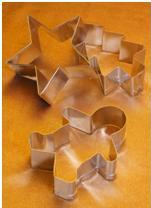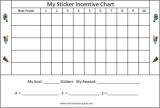Diets for Picky Eaters, Toddlers and Children with Sensory Defensiveness
Learn the best tips and diets for picky eaters to help increase healthy food for kids. Many children with sensory defensiveness, characteristics for autism, and allergies or sensitivities end up being on a very limited diet due to refusing certain foods. This is extremely frustrating to parents and may result in nutritional deficiencies.
An incentive chart can work well in providing positive behavior supports to encourage healthy foods in diets for picky eaters. List new foods to try and work up to getting them to try each at least 10 times, rewarding with a prize for 2-4 stickers.
It may also be necessary to gradually remove foods from diets that children intensely crave as this can be a sign of an allergy or sensitivity. After putting our son on a gluten free casein free diet, his obsession with macaroni and cheese, cheesy tortillas, and pizza has almost disappeared. He has also started trying new foods and eating vegetables without struggles.
Tips for Increasing Fruits and Vegetables in Diets for Picky Eaters
• Regardless of whether your child likes a food item or not you should still continue to present different fruits and vegetables on their plate at each meal.
• Focus on merely getting them to try the food item at each meal. If they do not want to eat more, respect their wishes and reinforce their behavior of trying. Ex. “I am so proud of you for trying your green beans”. It can take 10-15 times of trying it before acquiring a taste for it. Most parents give up before that. Use the charts for this.
• Do not give seconds on desired food if they are not willing to even try the other items. Encourage even just touching his or her their tongue to the item as a willingness to try it. Over time you can encourage at least one bite. Have them "kiss" the food.
Picky eaters are more likely to eat an undesirable item if they know it’s only required to eat one bite and that they will get something they like immediately afterward. However, do not push. Respect your child's choice to say no, but do not give seconds of desired foods.
• Tell your child that taste buds change over time and that things they may not have liked in the past, they may like now, which is why it is important to always at least try it each time. However, this tactic will probably not work for kids with autism signs.

• Include foods into diets for picky eaters that are fun by allowing children to play with it with his or her hands and possibly touching it to the arm and briefly to your child’s lips.
Examples:
1. Use cookie cutters to make gingerbread man shaped cheese, melon or cantaloupe pieces. Play with the pieces like people and let them “crawl” up your child’s arm and kiss your child on the lips. Next time encourage with imitation to have them “bite” the arm off, while laughing to promote silliness.
2. Arrange pieces into silly faces, such as grapes for eyes, a strawberry for the nose, and an apple slice for the mouth. Have the “mouth” give them a kiss on the cheek and then on the nose and then on the mouth.
Gradually work up to encouraging your child to take just one bite to try it.
3. Pretend you are an animal your child loves, such as a bunny eating carrots or a dinosaur eating "broccoli trees".
4. Make fun apple balls, zucchini balls, melon balls, etc. with a small scoop. baste with some honey to increase sweetness naturally and let your child skewer them with a shishkabob stick.
Tips for increasing Whole Grains in Diets for Picky Eaters
• Make pasta ½ white and ½ whole grain
• Make sandwiches ½ white bread and ½ whole grain bread. Cut into four squares and arrange into a checkered pattern for child friendly appeal.
• Mix favored cereal with a whole grain cereal.
• Over time gradually add more of the whole grain products to diets until they do not notice a difference.
Tips and Diets for Picky Eaters with Sensory Defensiveness

Sensory Processing Disorder can often be a common cause of picky eating behavior. The following information can be helpful for all children, but especially for those with sensitivity to diets with certain textures.
• Try gradually adding very small amounts of healthy foods to diets for picky eaters. Choose foods with smoother textures using a blender if needed.
Examples include putting pureed squash or pumpkin in macaroni and cheese or a small amount of spinach or pureed beans in spaghetti sauce (I actually do this to get my husband, who is picky about beans as well!).
• Have your child eat in a room with dim lighting to avoid noticeable changes.
• Always give one preferred food with two non-preferred foods.
• Provide an empty bowl on the table to put food he or she doesn't want as opposed to throwing it on the floor.
• Focus on merely getting them to try the item at each meal. If your child does not want to eat more, respect his or her wishes and provide other preferred foods as reinforcement.
Ex. “Yea! I am so proud of you for trying your green beans would you like some applesauce now?” It can take 10-15 times of trying it before acquiring a taste.
• Try to have picky eaters suck on a popsicle first prior to trying new textures to help temporarily decrease oral defensiveness.
Return to Behavior Intervention Plans page
Return to home from diets for picky eaters page
